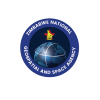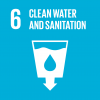What began as the development of a cubesat (BIRD-5) at the Kyushu Institute of Technology in Japan took off on a spacecraft to the International Space Station from the Mid-Atlantic Regional Spaceport at the National Aeronautics and Space Administration's (NASA's) Wallops Flight Facility in Virginia, US on 6 November 2022 (watch the video of the launch of the CRS2 NG-18 (Cygnus) Mission (Antares), in the video below the article). Later this month, when the satellite will be launched from the International Space Station into a 400km orbit, Zimbabwe will have its own satellite in orbit, ZimSat-1.
Equipped with a multispectral camera, an image classification tool, as well as transmitters and receivers for radio, ZimSat-1 will help Zimbabwe in land, water and mapping, including weather forecasting, infrastructure planning, and disaster prevention.
The government-funded mission will consist of ZIMSAT-1 two cubesats from Japan and Uganda, each embarking three multi-spectral cameras. The ground resolution will be less than 100m. Ground sensor terminals are used in addition, to monitor floods in remote areas and transmit that data to the satellite, for relay back to the space agency, the Zimbabwe National Geospatial and Space Agency (ZINGSA).
The mission will allow to monitor, Land Use and Land Cover (LULC), soil fertility, water quality, attitude visualisation and radio communication. The Automatic Packet Reporting System (APRS) digipeater APRS shall provide digital message relay service to the amateur radio community. LULC applications such as identifying crop health or calculating soil adjusted vegetation index, cultivated area and leaf chlorophyll index using NDVI Images will be facilitated. BIRDS 5 multispectral camera shall be used to assess water quality of lakes or damns using 1U satellite with spatial resolution of 100m. The Nitrogen/fertility levels of soil can also be analysed via GIS software of the satellite imagery. The satellites attitude visualisation is obtained by getting the gyro data and solar panel voltage. 3D satellite models are also visualised based on these results.
ZINGSA, a Space4Water stakeholder also maps Zimbabwe's wetland areas, that is used by the Zimbabwe National Water Management Authority and is available online in the Zimbabwe National Wetlands geodatabase).
In addition to the satellite itself, BIRDS 5 supports a free app (BIRDS-NEST, NEST = Network of Educational Satellites) with which satellite images from ZIMSAT-1 can be downloaded onto smartphones for free. ZIMSAT-1 is supported by the Global Multi-Nation BIRDS Satellite project, a multinational program which helps countries build their first satellite. The BIRDS 5 project officially kicked off on 14 July 2020. The objectives of the project included to teach the entire processes of a satellite program from mission planning to satellite disposal, to lay down foundation of sustainable space program by accumulating human resource in universities and launching a university space research and education program as well as to create international human networks to assist the infant space programs. The BIRDS program experiments the lean satellite approach
On 7 July 2022 delegates from Uganda and Zimbabwe handed over their satellites to Japan Aerospace Exploration Agency (JAXA) at the Tsukuba Centre Japan.







